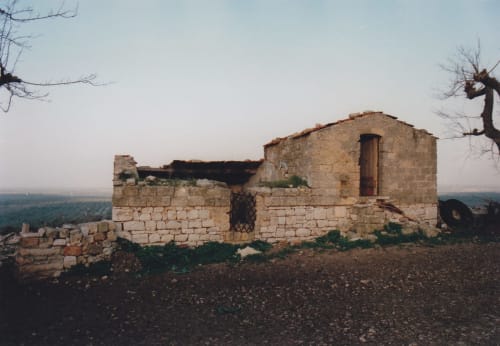The Story

Towards the end of the 1700s, the left wing of the masseria was built, characterized by walls more than a meter thick and ceilings made of terracotta cylinders with the bottom pierced: an ideal ceiling in that it was light, full of air to protect against the summer heat but also with the possibility of filling with hot air with the fireplace lit and regaining warmth during the night: these are the 'Murgia' rooms, the oldest in Lama di luna. Towards the end of the 1800s, Baron di Faivano decided to complete the structure by building the right wing with walls eighty centimeters thick and ceilings of girders and vaults of calcareous tuff, thus giving the families of sharecroppers the possibility of staying in the masseria. Each room, about twenty square meters, was the home of one of these families and was equipped with a window and fireplace.

The forty chimneys on the roofs give us the measure of the community that gave life to the masseria, where before dawn the communal areas were tidied up and everything had to be in place at sunrise when activity in the fields began. The settlers, on the other hand, whose contract did not provide for a house, would build themselves a shelter with the stones taken away from the crops, making the Casedd, or trulli of Andria where they would stay with their donkey, useful in cultivating the fields but also to keep the casedd warm. At the end of the 19th century, a serious wine crisis forced the Baron to sell the masseria with around 190 hectares to Mr De Bartolo, who, following the spread of phylloxera in the vineyards, reconverted the fields into almond and olive groves until the 1950s, after the war, when Dr Palasciano took over the masseria and rented it out to the shepherds of Coratini and their flocks. This moment marked the inexorable beginning of the degradation of the masseria, both within the walls and in the fields

In 1991, enamored with the location and landscape of the beautiful farmhouse, I purchased it and, freed from the flocks and shepherds, began a long restoration within the walls and in the fields. Ten thousand olive trees, ten thousand vines, two thousand almond trees, one thousand cherries, a 535-meter-deep artesian well, and plantings of cereals and various vegetables marked the agricultural rebirth set on the utmost respect for nature, leaving the other one hundred hectares to the natural landscape to let the sheep graze

A karst cave and dozens of partly restored casedd in a murgia now devoid of cultivation but rich in wild essences, natural smells flowers wild orchids, fennel, ferulae, thyme are there to accompany the most sensitive guest on unforgettable walks. By making a new stable and new agricultural warehouses I was able to free the farm and begin in 2000 a long restoration that will end in 2003 to give guests from all over the world the opportunity to relive the atmosphere and magical moments of the past